Three Japanese Contemporary Artists You Need To Know || Japanese Art
A Beginner’s Guide to 3 Famous Japanese Contemporary Artists
So, when you think of “Japanese art,” what comes to mind?
Giant pumpkins? Manga? Smiling flowers? Or even dramatic tsunamis?
The iconic imagery of Japanese contemporary art is instantly recognizable to people around the world.
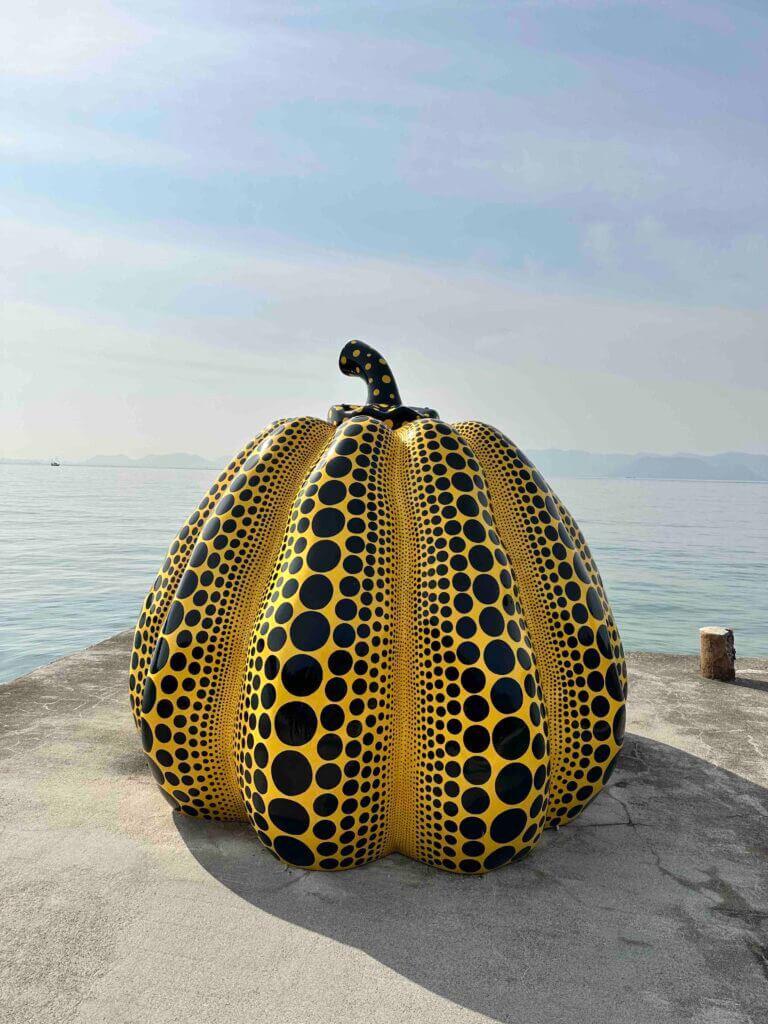
It is brightly coloured, experimental, but also rich in history and culture.
If you’d like to learn more about Japanese art, or just want to feel a little less lost when walking around a Japanese museum or gallery, then keep reading – this article is for you!
To help you dip your toes into the world of Japanese contemporary art, here is a short introduction to three iconic works of art and the three fascinating artists and stories behind them.
We’ll also be introducing some new vocabulary words along the way…!
Let’s start with some basics!
| English | Pronunciation | Japanese |
|---|---|---|
| Art (fine) | bijutsu | 美術( びじゅつ) |
| Art (general) | geijutsu | 芸術(げいじゅつ) |
| Art Museum | bijutsukan | 美術館(びじゅつかん) |
| Painting | kaiga | 絵画(かいが) |
FUN FACT || The term bijutsu (meaning “art,” or “fine art”) in Japanese is very new, first used in the late 19th century! It comes from the German words Kunstgewerbe (meaning “arts and crafts”) and bildende Kunst (meaning “visual arts”).
JUST REMEMBER || bijutsu refers to fine art, or visual art (think paintings, sculptures, etc!), and if you want to talk about art more generally (including music and theatre), you should use 芸術(げいじゅつ)geijutsu.
Understanding more about a country’s art is an essential way of learning more about its culture.
Missing your favorite Japanese artist? Leave us a comment.
Japanese Contemporary Art || A Brief History
Japanese Contemporary Art || Pumpkin, by Yayoi Kusama
Japanese Contemporary Art || Midnight Truth, by Yoshitomo Nara
Japanese Contemporary Art || Flower Ball, by Takashi Murakami
Japanese Contemporary Art || Museums and Galleries
Japanese Contemporary Art || FAQs
Japanese Contemporary Art || A Brief History
Keen to forge a new, modern artistic identity at the end of WWII, the Japanese artistic community increasingly began to step away from “traditional” art styles.
As artists began to experiment, new creative styles and methods were born…!
This ultimately culminated in the 1950s, which saw the beginning of the Japanese “avant-garde” period.
During the avant-garde, Japanese artists were influenced by international artistic movements, like pop art, abstract impressionism, Dadaism, and more (!), but also drew inspiration from domestic art and culture.
In the 1980s, artists started to blend art with pop culture, with the concept of kawaii (which means “cute”) becoming a major aesthetic.
Nowadays, Japanese art is very eclectic, and continues to develop in exciting ways!
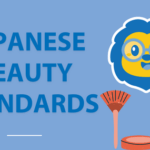
Japanese Beauty Standards || Discover the History and Evolution of Aesthetics
Japanese beauty standards have uniquely evolved throughout history, shaped by a unique combination of traditional cultural values and modern influences.
Yayoi Kusama
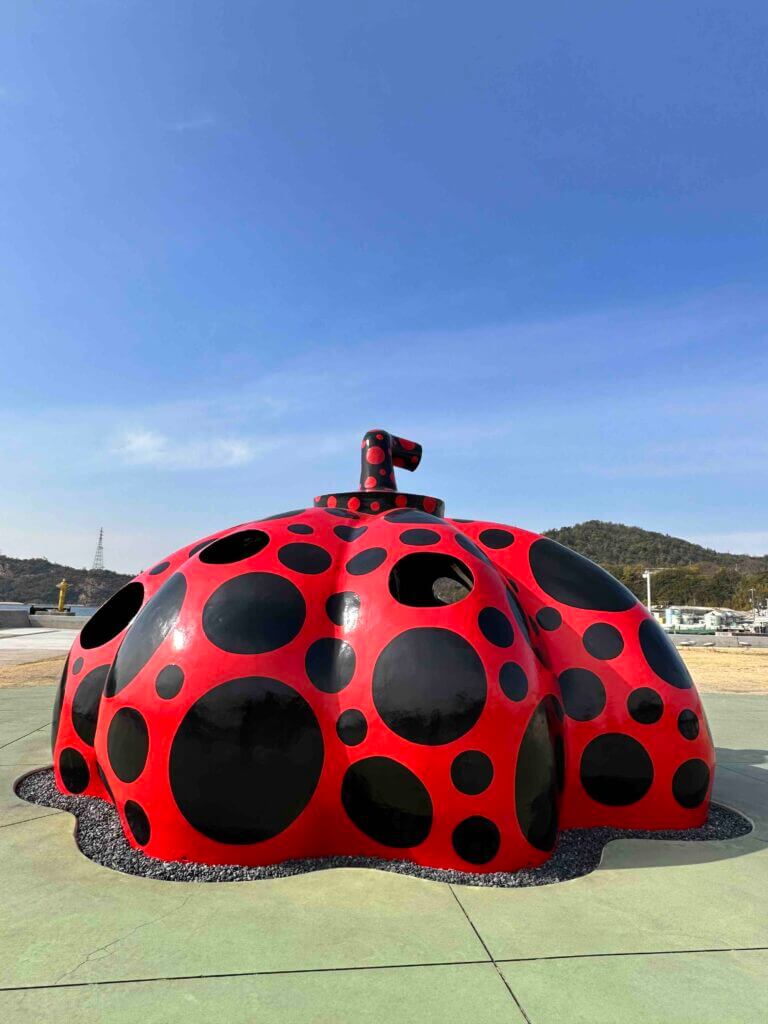
Yayoi Kusama 草間彌生, Pumpkin 南瓜 (Kabocha),1994
From her colorful pumpkins to her infinity rooms, Yayoi Kusama is a mainstay of Japanese (and global…!) contemporary art.
Yayoi Kusama was born in 1929 and was originally trained in the traditional nihonga (日本画) style before moving to New York City.
In NYC she was inspired by pop artists like Andy Warhol and the abstract impressionists (think Jackson Pollock!).
Kusama has been depicting pumpkins for well over 50 years, with her first pumpkin appearing as far back as 1946!
But why pumpkins?
The pumpkin, or 南瓜(かぼちゃ)kabocha in Japanese, is a common ingredient in Japanese foods, and is considered by many to be a comfort food.
For Kusama, pumpkins are cheerful, represent “stability, comfort and modesty,” and bring her back to the happy memories of her childhood.
“I love pumpkins because of their humorous form, warm feeling, and a human-like quality and form. My desire to create works of pumpkins still continues. I have enthusiasm as if I were still a child.”
Yayoi Kusama, 2015
Yoshitomo Nara

Yoshitomo Nara 奈良美智, Midnight Truth, 2017
Yoshitomo Nara’s “big-headed girls” emerged in the 1990s during Japan’s own pop art movement.
Born in 1959, Nara studied art in both Japan and Germany, and like Kusama, his works have appeared in exhibitions all over the world.
Although Nara states that it was never a direct influence, it’s hard not to see elements of manga (漫画) in his work, especially the girls’ exaggerated facial features.
With their child-like and kawaii appearance, Nara’s “girls” are nostalgic and appeal to our inner child.
“… His work attracts many people, because they recognise their precious inner solitude within it, a solitude which has often been lost. […] Nara-kun’s work gives each of us a sudden urge of nostalgia.”
Banana Yoshimoto, 2011
His paintings typically feature one solo figure who looks directly at the viewer with a melancholy gaze.
This can give his works a feeling of loneliness.

Japanese Beauty Standards || Discover the History and Evolution of Aesthetics
Japanese beauty standards have uniquely evolved throughout history, shaped by a unique combination of traditional cultural values and modern influences.
Takashi Murakami
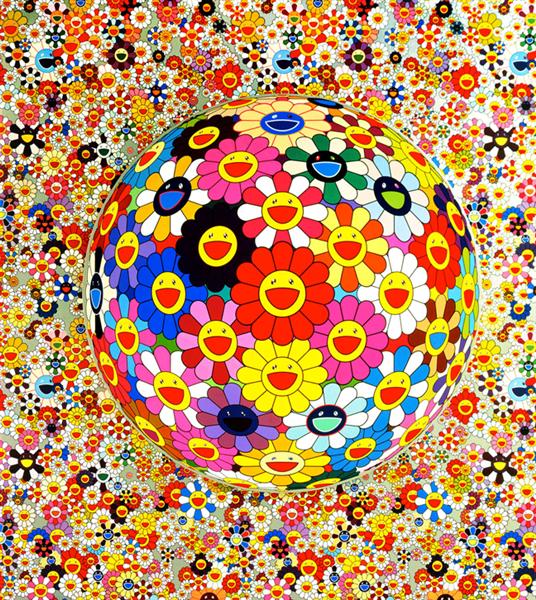
Takashi Murakami 村上隆, Flower Ball, 2002
Takashi Murakami is perhaps best known for his “Flower Ball” series, filled with layers upon layers of colorful, whimsical flowers!
As an art teacher in the 1980s, Murakami had his students draw flowers for practice, and it was from then on that his interest in them grew.
DID YOU KNOW || Flowers are important symbols in Japanese art.
Some flowers that commonly appear in Japanese art are:
- Cherry blossoms – 桜(さくら)sakura
- Chrysanthemums – 菊(きく)kiku
Murakami is also known for establishing the “Superflat” (スーパーフラット) art movement, which draws inspiration from both modern consumer culture and traditional Japanese aesthetics (for example, from ukiyo-e 浮世絵).
You may also know Murakami from his many collaborations with other artists, designers, and even fashion brands…!
From designing handbags for Louis Vuitton to directing a music video for Billie Eilish, Murakami’s artistic mark is truly everywhere!
So… What Next?
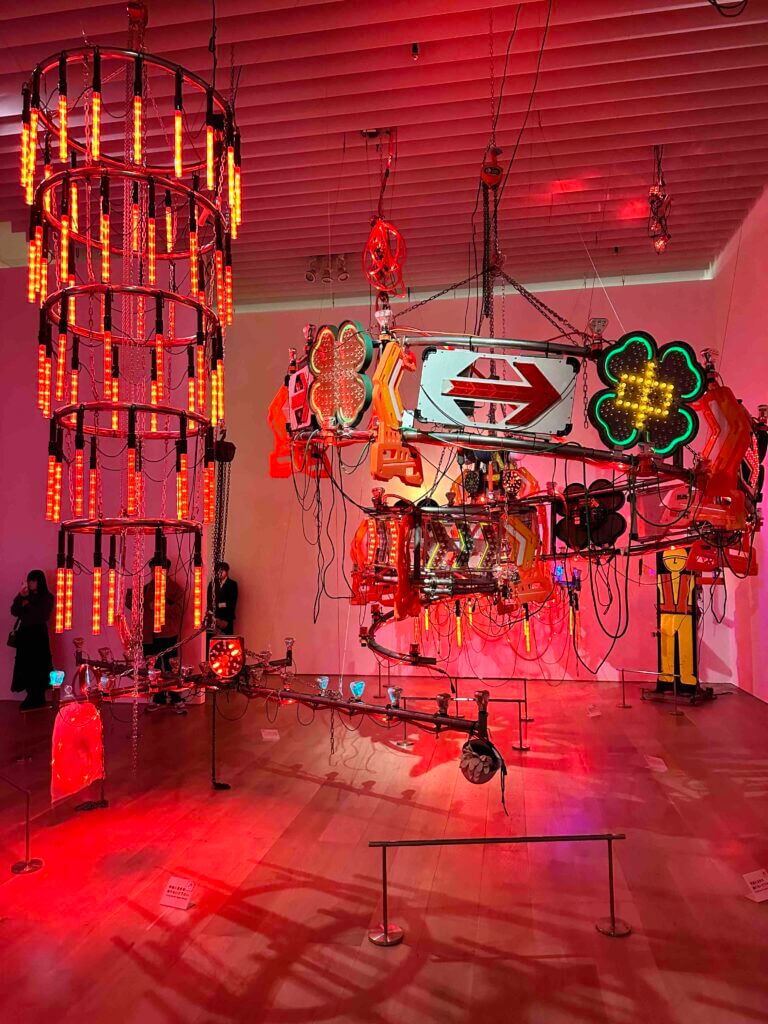
Japanese contemporary art has so much to offer, and these three artists give just a small taste of what Japanese art can offer.
If you want to learn more about art in Japan, we highly recommend checking out the country’s many art galleries and museums.
Our Tokyo favorites are:
- Mori Art Museum – 森美術館
- The National Art Center, Tokyo – 国立新美術館
- Museum of Contemporary Art, Tokyo – 東京都現代美術館
Of course there are many more dotted around the country.
TOP TIP || If you want to visit the pumpkins we talked about above take a trip to Naoshima Island which you can reach easily from Okayama. You’ll need to take a train to UNO PORT (using a JR Rail Pass) and then a short ferry to reach the island.
Notice: Undefined variable: context in /home/ltlchi5/public_html/flexiclasses.com/wp-content/plugins/ltl-library/blocks/acf-post-preview/_index.php on line 49
Have you experienced art in Japan before? What did you think?
Why not let us know in the comments below and tell us your thoughts.
Japanese Contemporary Art || FAQs
What is Yayoi Kusama famous for?
Yayoi Kusama is best known for her colourful pumpkins and infinity rooms.
Where can I visit the Kusama pumpkins?
If you want to visit the pumpkins take a trip to Naoshima Island which you can reach easily from Okayama.
You’ll need to take a train to UNO PORT (using a JR Rail Pass) and then a short ferry to reach the island.
How do I say “art” in Japanese?
The general term for “art” in Japanese is 芸術 (げいじゅつ geijutsu).
However, if you want to solely talk about “visual art” or “fine art,” you should use 美術 (びじゅつ bijutsu).
You’ll see the word 美術 in the word for “art museum” too, which is 美術館 (びじゅつかん bijutsukan).
Where can I see art in Tokyo?
Tokyo is full of amazing art museums and galleries, but the most famous museums include:
— Mori Art Museum
— The National Art Center
— Museum of Contemporary Art
What is Murakami famous for?
Takashi Murakami is perhaps best known for his “Flower Ball” series, filled with layers upon layers of colorful, whimsical flowers!
As an art teacher in the 1980s, Murakami had his students draw flowers for practice, and it was from then on that his interest in them grew.
Want More From LTL?
WANT TO LEARN JAPANESE? Check out our online Japanese courses here.
We offer a 7-day free trial to all new students where you can study 24/7.
What about studying Japanese in Japan instead? We’ve got your back. Our Japanese courses in Tokyo can either be taken in small groups of no more than 5 students or individually for a more tailored experience.
We even offer incredible homestay experiences in Tokyo as well.
Come and be a part of this amazing community.









